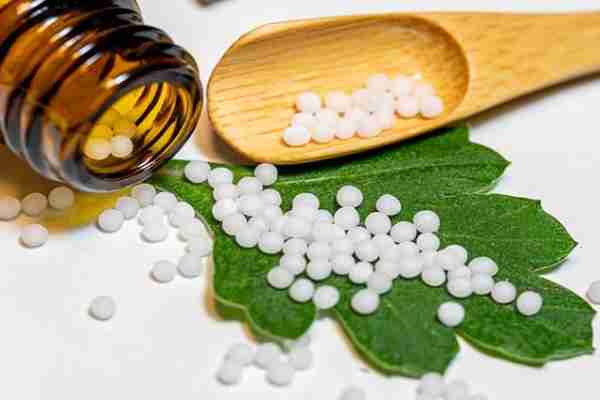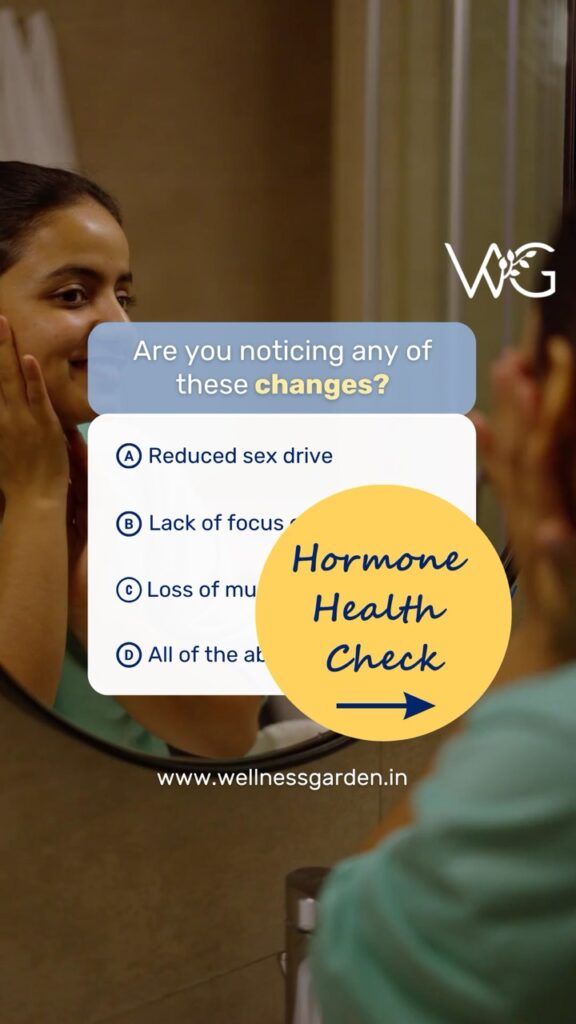Exploring the benefits of Homeopathy: Natural Approach to Wellness
- Specialties & Therapies
- 7 mins
- March 20, 2023
- AYUSH
- Homeopathy, Pain relief
Homeopathy is a therapeutic system derived from the Greek. It is the world’s second-largest therapy, according to the World Health Organization (WHO), embraced by approximately 500 million individuals worldwide. The benefits of homeopathy embodies a personalized approach to medicine, addressing not just the external symptoms but the entirety of an individual’s being, encompassing mind, body, and spirit.

Introduction of Homeopathy
Homeopathy (home: similar; pathos: suffering), a treatment approach using mind-body holistic medicines, is the 2nd largest therapy, as stated by the World Health Organization (WHO), opted by approximately 500 million people worldwide. Propounded and introduced by Dr. Samuel Hahnemann, MD from Germany, during the late 18th and early 19th centuries, Homeopathy is a tailor-made medicine that treats the individual who presents with the illness and not just the external symptoms of the illness. It observes an individual as a whole – in terms of the mind, body, and spirit.
The popularity behind Homeopathy
Having had about 200 years of clinical experience along with research work published in medical journals, homeopathy is now gaining popularity among other holistic practitioners and medical doctors alike.
Principles of Homeopathy
- Law of Similars – The key principle of homeopathy, the Law of Similar (similia similibus curentur / like cures like) states that an illness or disease can be cured by a substance that produces similar symptoms in healthy people and is the basis for prescribing medicines to sick persons.
- Law of Minimum Dose – The principle of dilutions, or Law of Minimum Dose, states that the lower the dose of the medication the greater its effectiveness. This theory is called the “Memory of Water.”
- Individuality and Constitution – This homeopathic principle states that it is important to understand a person’s ‘individuality’ and ‘constitution’ to treat their bodily, or physical conditions since the mind and body form a powerful link.
- Vital Force and Dynamic Balance – Homeostasis is the process by which our body’s dynamic functions are balanced. When the body functions are out of balance, homeopathic treatment goes to the root of the imbalance and helps restore the body to its original state of health and balance.
Benefits of Homeopathy
Homeopathic remedies boost the natural defense mechanisms of our body and play a vital role in preventative medicine. Homeopathic treatment believes that to restore optimal health and well-being one must eat healthy, do regular exercise, and give yourself adequate time to relax. It uses individualized and customized medicines that do not merely treat the symptoms of the illness but also the imbalance caused by it.
Homeopathy is a treatment method that caters to the person as a whole (physical, mental, and emotional), to not only relieve symptoms but also prevent illness and maintain health. It is said to be effective in the case of people suffering from asthma, depression, arthritis, migraine, PMS, etc.
Homeopathic Diagnosis
A homeopathic diagnosis includes physical symptoms, existing emotional or psychological state, and the person’s constitution – originality, physical sensitivities, strength, etc. The right remedy for a condition will take all of these aspects into account, so each diagnosis and remedy are individualized.
Homeopathic remedies are generally personal based on the individual and their symptoms, except in epidemics, where a single homeopathic remedy may be employed as the Genus epidemicus – matching with their presenting symptoms.
Treatment and conditions in Homeopathy
Homeopathic medicines are safe, economical, and easily available worldwide in homeopathy medical shops and do not expire if stored under appropriate conditions.
It is very useful for conditions such as:
- Emergencies.
- Epidemics.
- Acute and chronic diseases.
- Genetic disorders.
- Women’s ailments.
- Pregnancy management.
- Child and old-age care.
- Mental illnesses.
- Lifestyle diseases.
History of Homeopathy
Dr. Hahnemann found that by using specially prepared remedies made from very dilute amounts of herbs, minerals, or animal extracts, he could utilize the healing power of the law of similars safely and effectively with no side effects.
He carefully documented 200 remedies, writing down exactly what each remedy was able to cause and cure. Today there are almost 2000 homeopathic remedies, each as carefully studied as Hahnemann’s original ones. The treatment is individualistic, holistic, and non-toxic.
Homeopathic popularity goes way back to Charles Darwin who, according to his letters, received homeopathy and water cure treatments from Dr. James Manby Gully. At least 11 American Presidents and 2 British Prime Ministers either used or sponsored legislation allowing homeopathy to be practiced. Not only did Mahatma Gandhi believe in the Homeopathic way of life but so did many of the great sportspersons who bragged about the same.
Understanding the Law of Similar
Tracing back to Hippocrates, Hahnemann developed the idea of homeopathy when he took a decoction of cinchona bark, a popular treatment for malaria-like symptoms during his time, resulting in the development of similar symptoms of the quivering illness. Hahnemann suggested if a substance could cause symptoms of illness in a healthy person, it can also, in small doses, cure a sick person having similar symptoms.
Dr. Hering in his ‘Laws of Cure’, published in 1845, stated that given the administration of the correct benefits of homeopathy medicine, cure takes place gently, quickly, and permanently in the following manner:
- From above to below (up to downward or head to toe)
- From interior to exteriors (inward to outwards)
- From most important to less and less important organs
- In reverse order of their arrival (last appeared symptoms disappear first and vice versa).
Biological effects of high dilutions
The process of potentization is when substances are highly diluted in a step-by-step manner such that some form of information, or energy, is transmitted from the original substance to the final diluted remedy. Research on high dilutions began in the 1950s but an increase in the number of published studies was seen in the mid-1990s. A research summary was published in 2007 which assessed the entire evidence base for the effects of high-potency homeopathic medicines. 67 experiments published in 75 publications were evaluated. 75% of these studies found that homeopathic high dilutions have biological effects and these results remained the same even on repeat experimentation.
Homeopathic self-treatment
The first homeopathic visit can take anywhere between 1-2 hours as the physicians perform lengthy interviews where they ask several questions to observe your personality traits as well as any unique behavioral and physical symptoms. A physical examination, followed by laboratory and other tests, is also part of the treatment process.
However, homeopathic medicines do not require a doctor’s prescription. They are widely available over-the-counter (OTC) in different forms: dilutions, mother tinctures, tablets, or specialty products. They are safe for home use.
There are a host of educational opportunities available online and in books on homeopathy, although one must seek the guidance, or advice, of a professional homeopath. Decoding the subtleties of a corresponding remedy, or an illness that may not quite show on the surface but may be waiting to explode deep within, is not easy.
Healing with homeopathy
Conventional pills can have adverse effects on our system when used for every illness. It can hamper the body’s natural ability to heal. Over the years, the same drug can prevent the immune system from responding rapidly and also effectively on its own. This leads to drug resistance, also referred to as iatrogenic disorders – or, drug-induced diseases. Benefits of Homeopathy, on the other hand, can treat all forms of medical illnesses that have not been given a conventional diagnosis.
In homeopathic treatment, a detailed history, followed by physical and clinical examination of the patient is done to record the signs and symptoms which are matched to remedies using either a repertory, an index in the homeopathic Materia Medica, or pattern recognition. The homeopathic physician keeps track of the patient’s progress while paying particular attention to the development of symptoms. The physician may, thereafter, adjust the prescription, or dosage, depending on what is elicited, or observed.
Homeopathy and Child Care
Even the fussiest of children enjoy taking the little ‘sugar pills’, that the homeopathic medicine, which in turn provides a positive mind for recovery. This inexpensive treatment method has an easy mode of operation with no side effects or adverse reactions, and no disease suppression. Children born under homeopathic care are known to be very active, intelligent, and free from day-to-day health problems as they develop a good resistance along with lots of positive energy.
12 Things to know why Homeopathy is good for you:
Homeopathic remedies are derived from natural substances that come from plants, minerals, or animals.
- Homeopathic treatment is more patient-centered and believes in understanding the individual who has the illness rather than just the illness.
- Homeopathy treats the interconnected web of functional factors since it views the human body as an orchestrated, synchronous network of interconnected systems.
- Homeopathy acts as preventative medicine by building up immunity and helping the system prevent illness even before it gets established.
- Homeopathic medicines have no side effects; however, it is always imperative to consult a homeopathic physician for proper guidance and effective treatment.
- Homeopathic medicines are inexpensive. In some countries, expenses incurred on doctor-prescribed homeopathic medicines are reimbursed by the government.
- Homeopathic medicines are easy to use. They can be easily dissolved under the tongue (or in water), or taken as a liquid or drops.
- Homeopathy is effective for viral and bacterial infections, without the fear of developing antibiotic resistance.
- Homeopathic remedies can be used both before and after surgeries to prepare a patient physically and psychologically and hasten the healing process.
- Homeopathy can be used to treat a wide range of medical conditions. They can be used alone with good effects, or to complement and optimize the effects of conventional medicine, especially in disorders such as high blood pressure and diabetes.
- Homeopathic remedies are non-toxic and, unlike conventional medicine, are not tested on animals but on healthy people who can best describe how each remedy affected them in both health and illness.
- Homeopathy is not a placebo and has been used on children, animals, and even plants with excellent outcomes.
- Homeopathy is FDA-approved and the regulating body also suggests that homeopathic remedies can be bought without a doctor’s prescription.
The benefits of Homeopathic treatment employs a holistic avenue of therapy that aims to help our body return to dynamic (re)alignment. It focuses not on the endpoint or pathological state, but on the vibrant, dynamic processes which underlie and precede it. The treatment program curated by a trained homeopathy practitioner is engaged to reflect a more individualized, or personal, need, not just the needs of the illness. Homeopathy is concerned with disease prevention and pays attention to details of health issues, with which one can prevent large problems beforehand.
If you’re interested in practicing the aforementioned Homeopathy treatment under our guidance, feel free to get in touch with us for personalized Homeopathy Consultations and more.
A Word from WG
Wellness Garden is your committed partner in seeking comprehensive natural and holistic therapies to address all your pain and wellness requirements. Our approach encompasses the entirety of your body, mind, and environment, integrating body, mind, and nutrition therapy and various other techniques.
Whether you’re facing physical or mental health concerns, life hurdles, or simply aiming to enhance your overall well-being, we’re here to provide the support you need. Get in touch with us to explore the possibilities and embark on your journey towards holistic therapy and improved health.
- Table of Contents
- • Introduction
- • Overview
- • Why Homeopathy?
- • A Word from WG
Recent Posts
Join Our Newsletter
End note from WG Team
Samuel Hahnemann
Founder of Homeopathy
Disclaimer: This information is provided for educational purposes and should not be construed as medical advice. Please consult with healthcare practitioners before undertaking any changes in wellness routines or adding new therapies.
Latest Blogs
Check out some of your blogs related to your interest.
- September 18, 2025
- Dr. Piyush Jain
- 2 Mins
- September 12, 2025
- Dr. A. Shaji Bharath
- 2 Mins
- September 10, 2025
- NIH
- 4 Mins
- August 16, 2025
- Dr. Shubhankari P. Rao
- 2 Mins





